 Bringing home a new puppy is an exciting and joyful experience. As a responsible dog owner, it’s essential to provide your new furbaby with the necessary training to ensure they grow up to be well-behaved and happy companions. Puppy training lays the foundation for a harmonious bond between you and your canine buddy. In this article, we’ll explore essential tips for successful puppy training, drawing insights from veterinary professionals, scientific studies, dog trainers, and trusted organizations specializing in pet care.
Bringing home a new puppy is an exciting and joyful experience. As a responsible dog owner, it’s essential to provide your new furbaby with the necessary training to ensure they grow up to be well-behaved and happy companions. Puppy training lays the foundation for a harmonious bond between you and your canine buddy. In this article, we’ll explore essential tips for successful puppy training, drawing insights from veterinary professionals, scientific studies, dog trainers, and trusted organizations specializing in pet care.
Tag Archives: dog training tips
Using Treats to Teach Your Dog to Be Safe in the Garden
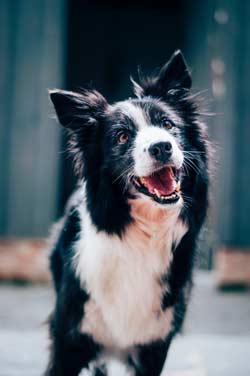 We all love to pamper our pets whether it’s through spending quality time with them by keeping them active or feeding them delicious treats for rewarding good behavior. Giving our pooches treats is more than expressing our love to them or making them feel special, it’s also an important aspect for dog training too.
We all love to pamper our pets whether it’s through spending quality time with them by keeping them active or feeding them delicious treats for rewarding good behavior. Giving our pooches treats is more than expressing our love to them or making them feel special, it’s also an important aspect for dog training too.
When we think about creating a dog friendly garden, we usually think about in terms of worrying about if our dogs will do damage to our flowers or eating toxic plants. By training our dogs to be safe in our gardens, we’re not only letting them have the space to explore the outdoors but encouraging positive reinforcement at the same time so you and your dog can share the space together. The idea isn’t to confine your dog but to ensure they’re happy to play in a designated area.
Think about space
Wherever you choose to have your dog’s play area, ensure the space has enough shady and sunny spots and different sections so your dog can have its own places to hide, explore and play. If your dog does love to dig, consider hiding an assortment of treats around the area where you want them to dig to encourage them to do so only in those places.
Training Your Dog With Positivity
Training anyone is challenging, whether it’s for a job, or as an educator – and that’s if you speak the same language as the person you’re training! Training your dog is even more challenging, because it is a meeting of minds between two entirely separate species! So how do you bridge the gap between human and animal to train your dog?
Psychology has all kinds of great studies about this. It is called operant conditioning, and it means we buttress behaviors with positive (adding something) or negative (taking something away) reinforcement or punishment. Further studies have shown that positive reinforcement works better than any other kind of training or learning. So how can you train your dog in a completely positive way?
Positive reinforcement includes all the fun things we love! Treats, hugs, and petting can all do far more to help your dog learn tricks and positive behaviors than yelling at it or punishing it when it does something bad. Furthermore, once you have taught the dog the behavior, verbal cues will suffice most of the time to ensure the dog continues the behavior whether you reward it or not!
Taking the Frustration Out of Dog Training
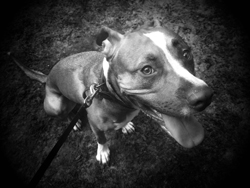 As crucial as dog training is for your pet’s social development, it’s also a task that can be extremely frustrating to commit to long-term as an owner. It’s perfectly normal to feel like you want to throw in the towel on days that are particularly hard for your dog to stay focused and listen, but that’s the biggest mistake you could make. Without consistency, dedication and patience, you can’t expect your dog to learn correct behaviors and get rid of the ones that drive you crazy (jumping, digging, barking, chewing, leash pulling, etc.) and can be dangerous (aggression, biting, growling, etc.). Addressing these unwanted actions and turning them around will take a while, but in the end, you’re sure to see it’s well worth the investment of your time. Below are a few tips for handling your dog’s training in a positive way, even when frustration begins to set in.
As crucial as dog training is for your pet’s social development, it’s also a task that can be extremely frustrating to commit to long-term as an owner. It’s perfectly normal to feel like you want to throw in the towel on days that are particularly hard for your dog to stay focused and listen, but that’s the biggest mistake you could make. Without consistency, dedication and patience, you can’t expect your dog to learn correct behaviors and get rid of the ones that drive you crazy (jumping, digging, barking, chewing, leash pulling, etc.) and can be dangerous (aggression, biting, growling, etc.). Addressing these unwanted actions and turning them around will take a while, but in the end, you’re sure to see it’s well worth the investment of your time. Below are a few tips for handling your dog’s training in a positive way, even when frustration begins to set in.
Training Tips to Help Prevent a Puppy from Growing into a Dog that Bites
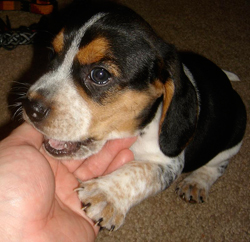 It’s an unfortunate situation, but one which many dog lovers have to accept – puppies can bite. It can be a major challenge trying to control biting behavior, but there are some ways in which you can teach your dog to reduce and eradicate this behavior.
It’s an unfortunate situation, but one which many dog lovers have to accept – puppies can bite. It can be a major challenge trying to control biting behavior, but there are some ways in which you can teach your dog to reduce and eradicate this behavior.
Puppies will at first start to bite because it’s fun and part of their daily play. It’s a completely natural and even essential behavior, especially when they are teething. Puppies love to bite their sharp little teeth into anything that passes their way during the development phase of their teeth, including the hands and feet of their master (and in worst case scenarios, children).
The good news is that most puppies can be trained to manage and minimize this problem quite easily. The faster that you start to train your puppy or young dog not to bite then the easier things will be for him and for you in the future.
Why Enroll My Puppy in Training Classes?
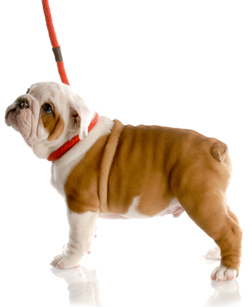 Do you have a puppy and are worried they might get out of control at some point? You should consider having them trained. In fact, the earlier the training starts the better it is for the puppy.
Do you have a puppy and are worried they might get out of control at some point? You should consider having them trained. In fact, the earlier the training starts the better it is for the puppy.
Having your puppy attend group classes is a good way to teach your dog how to respond to commands, basic obedience and manners. These classes give you an opportunity to learn how to handle your dog around other people, around other dogs, and in any environment where you need the most control.
A high number of people who own dogs are opting to enroll their dogs in training classes other than training them at home as there are many behavioral and social benefits that are associated to these training programs.
Benefits of Puppy Training Classes
Your Dog and Other Pets; Introductions
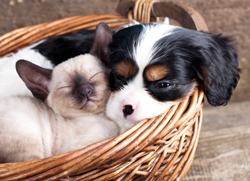 Whether you just got a new dog and you are trying to figure out the safest way to introduce him to the household cat, or you need to help your dog get along with a new bunny, some training and introductions are definitely in order! It does not matter what species of animal you are trying to help your dog become accustomed to, be it a hamster, ferret or pet iguana, knowing your dog is the very first step. If it is a new dog, you both will be in for a learning curve, as the dog’s prey drive and his previous socialization are truly being put to the test!
Whether you just got a new dog and you are trying to figure out the safest way to introduce him to the household cat, or you need to help your dog get along with a new bunny, some training and introductions are definitely in order! It does not matter what species of animal you are trying to help your dog become accustomed to, be it a hamster, ferret or pet iguana, knowing your dog is the very first step. If it is a new dog, you both will be in for a learning curve, as the dog’s prey drive and his previous socialization are truly being put to the test!
Prey Drive
Prey drive is the instinctual urge to chase, kill and eat a prey animal. All carnivores have prey drive, as it helped them survive through being adequate hunters. We see this in cats who play with toys and in wild wolves who hunt down rabbits. We even see this in dogs, though it often transfers itself into ball drive. Ball drive is virtually the same thing as prey drive, but the animal feels compelled to chase and catch a ball instead of a small animal.
Off the Leash; Letting Your Dog Exercise Without the Leash
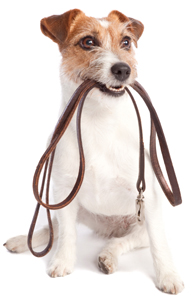 It is nearly every dog owners dream to let their dog run freely without being tied down, fenced in or stuck on a leash next to their owner. All dogs love to run, and most dogs need it to really burn off their pint up energy. All of that energy builds and builds until it is expressed in behavioral problems like destructive chewing or excessive barking. Running freely can bring a dog great joy and make him a tired, yet calm and relaxed pet at home. However, few of today’s pet dogs can safely enjoy a good off-leash run or play session simply due to a lack of training. You and your dog must be prepared and always on guard during such a risky endeavor.
It is nearly every dog owners dream to let their dog run freely without being tied down, fenced in or stuck on a leash next to their owner. All dogs love to run, and most dogs need it to really burn off their pint up energy. All of that energy builds and builds until it is expressed in behavioral problems like destructive chewing or excessive barking. Running freely can bring a dog great joy and make him a tired, yet calm and relaxed pet at home. However, few of today’s pet dogs can safely enjoy a good off-leash run or play session simply due to a lack of training. You and your dog must be prepared and always on guard during such a risky endeavor.
Reliable Recall
No dog should ever go off leash, even in a fenced area without a solid recall. Recall is the command in which you call your dog to come to you and he does at the drop of hat. Any dog should be able to immediately stop anything he’s doing, whether it’s in mid run to catch a ball or rolling in dirt to come to you when you ask him to. This is a major safety net that any dog should be able to do, but very few actually have been trained to do.
What is Clicker Training?
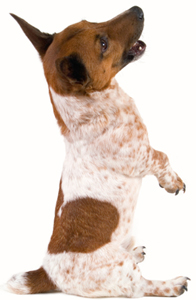 If you’re new to dogs, or even a seasoned pet owner you will hear about the wonders of clicker training from various sources. Your neighbors, friends, co-workers, groomer and even veterinarian may recommend it, mention it, or talk openly about it. Confusion abounds in the dog world when it comes to clicker training, so how will you know exactly what it is and how it can help you? This method of training is incredibly simple, anyone can become great at it, and it’s a scientifically proven method of communicating with and teaching your canine companion!
If you’re new to dogs, or even a seasoned pet owner you will hear about the wonders of clicker training from various sources. Your neighbors, friends, co-workers, groomer and even veterinarian may recommend it, mention it, or talk openly about it. Confusion abounds in the dog world when it comes to clicker training, so how will you know exactly what it is and how it can help you? This method of training is incredibly simple, anyone can become great at it, and it’s a scientifically proven method of communicating with and teaching your canine companion!
Based on Science
Ivan Pavlov is a popular name used commonly amongst animal trainers. He was a scientist that brought learning, teaching, and conditioning into the scientific community and made understanding animal training far easier for the everyday animal lover. Through his experiments with dogs, he was able to discover that animals can make automatic associations between one unrelated thing, such as the sound of a bell, to the positive outcome of a bite of food. These are known as Pavlov’s dogs, and he proved that a dog could become ready and expectant of a bite of food from the sound of a bell, simply through operant conditioning.
The Importance of Socialization For Your Dog
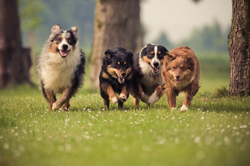 You will hear this often, from the rescue, breeder or shelter, your kennel club or dog obedience instructor and even the vet – you must socialize your dog! Even though the most important and dire time to socialize a canine is during his two fear periods in puppyhood, a dog continues to learn about the world around him throughout his entire life. This means even adult dogs can be socialized, but it will take more time, effort, and empathy on your part to help him past his fears, reactive behaviors, and any other issues you may see in him due to lack of socialization.
You will hear this often, from the rescue, breeder or shelter, your kennel club or dog obedience instructor and even the vet – you must socialize your dog! Even though the most important and dire time to socialize a canine is during his two fear periods in puppyhood, a dog continues to learn about the world around him throughout his entire life. This means even adult dogs can be socialized, but it will take more time, effort, and empathy on your part to help him past his fears, reactive behaviors, and any other issues you may see in him due to lack of socialization.
What Does Socialization Do?
Socialization is more than just helping a dog learn to be friendly around other people and dogs. It is far more than learning to communicate with other canines so that he can be safe at the dog park or play with your neighbor’s pets and kids. Socialization helps your dog become comfortable and learn the proper way to react, or not react, so certain situations, environments, and even objects. Everything from ground and floor textures to common household items such as baseball caps and umbrellas are all a part of the socialization schedule all dogs should go through during puppy hood.